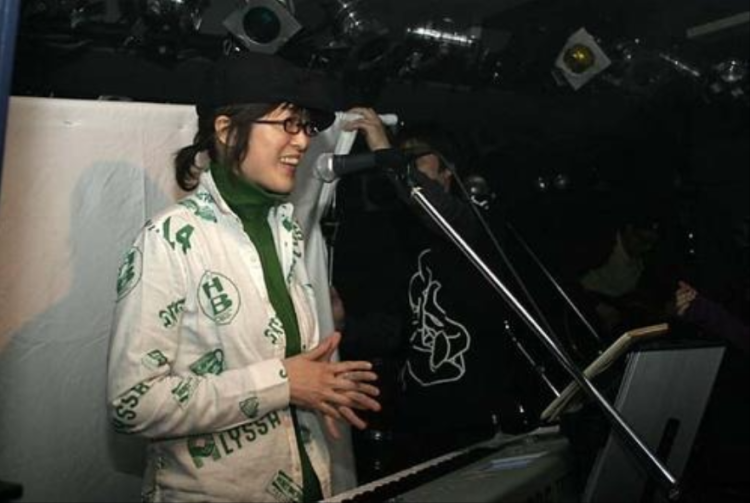
There are typically three things that people associate with SEGA: Sonic the Hedgehog, consoles that never got to shine, and great music. SEGA has undoubtedly housed some of the most creative composers in the industry, making everything from sweeping, pseudo-orchestral soundscapes, to fast-paced, pumped-up techno. But the best composers don’t let their skill and talent end with their music.
Enter Tomoko Sasaki, best known to SEGA fans as the main composer of NiGHTS into Dreams…. Her sound, helped along by Naofumi Hataya and Fumie Kumatani, is what arguably sold NiGHTS‘ surreal dream worlds and energetic gameplay. It’s often considered one of the best soundtracks in SEGA history, let alone on the Saturn, but it was only Sasaki’s third composition. And even then, it wasn’t even the strangest thing she ever did.
A Rising Star…
Tomoko Sasaki got her start at SEGA, and seemingly video games in general, with World of Illusion, the 1992 Genesis/Mega Drive game starring Donald Duck and Mickey Mouse. Here, her work was credited as “Maguro,” which, fun fact, refers to the bluefish tuna, a common fish served in sushi.
Without discussing the game itself, Sasaki’s score does an alright job complimenting the visuals and atmosphere. However, the tracks lack any of the ethereal, even bouncy qualities of later scores, and is devoid of memorable melodies. It is excusable though, given it’s the first game she composed, and because her talents improved greatly after.
A few years after her work on World of Illusion, she was put to task as the sole composer for the 1995 Genesis classic, Ristar (though she received minor assistance from Hataya), while also assisting composer Chiyako Fukuda on the Game Gear version.
Despite only being her second game as lead composer, Sasaki shows an immense amount of improvement over her previous work. Before, her songs lacked melody and substance; now, the score runs a massive gambit of ambient tunes, bouncy and energetic melodies, and fun, catchy songs. Perhaps most amazingly though, is that the music displays a sincere mastery of the Genesis sound chip. Ristar might just be the best sounding game on the system, on a technical level. It helps that the songs themselves are great.
Between World of Illusion and Ristar, Sasaki had two credits: one as a composer on 32X game Virtua Racing Deluxe, and one on the sound team of SEGA CD game Switch, known internationally as Panic!. However, her contributions to both of these games were minor, Sasaki only contributing a few jingles to VRD, and not being the lead composer on Panic!. Therefore, I don’t really count them in the grand scheme of things.
Her next project would be highly significant though: the score to the 1996 SEGA Saturn classic, NiGHTS into Dreams….
In My Dreams, I Can Hear You Calling Me…
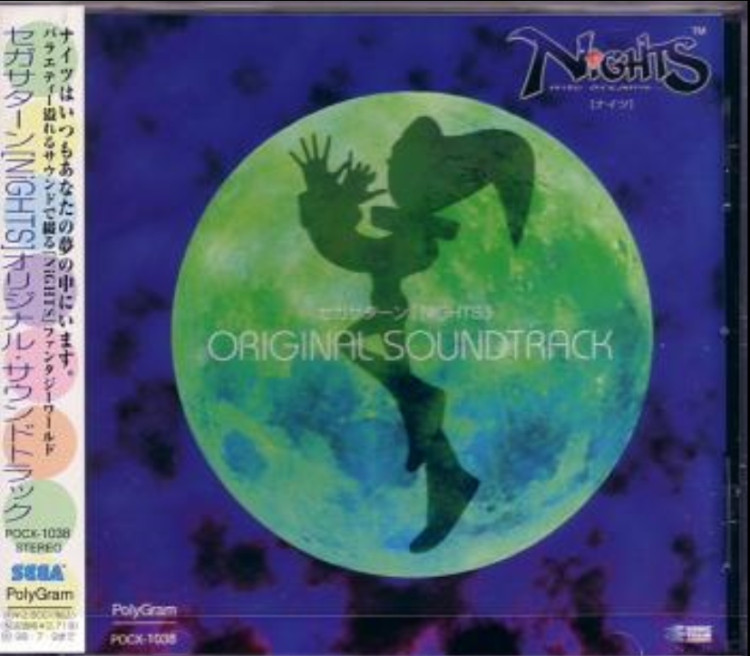
To bring together such a project, she was assisted by Virtua Racing and Sonic CD composer Naofumi Hataya, as well as Fumie Kumatani, who actually got her start at SEGA with NiGHTS. Together, the three created a score that gracefully complimented the calm dreams as well as the frantic nightmares, often making these thoroughly unreal worlds feel very personal.
Sasaki did not make every piece on the soundtrack, but she did make some of the more iconic themes from it and had the biggest influence over it. For example, she created the theme song of the game, “Dreams Dreams,” writing both the tune and the words. She also wrote two dramatic pieces which went for an orchestral style; “Know Thyself!” and “NiGHTS” both carry the main recurrent theme but are highly disconnected from the rest of the soundtrack, almost like they’re telling stories of their own through the music.
What gives this soundtrack so much charm is the way it sounds almost dreamlike, for lack of a better word. The instruments sometimes don’t even sound like instruments. The guitar, piano, drums, percussion, etc. are prevalent in the sound, but most songs have non-traditional or synth instruments backing or leading them.
This is exemplified in the song, “The Dragon Gave a Loud Scream,” in which the non-horn sections are dominated by strange, percussive sounds evocative of an intense nightmare in which one is being chased. The refrains use a smooth, ethereal sound as if carrying you through the dreamscape on the clouds it creates. A whistle serves as the leading instrument in several parts, sounding unlike any sound a human could make. It’s a totally unreal song, a perfect compliment to a totally unreal scenario drenched in surreality.
But Sasaki wasn’t quite done with surreality. After minor contributions to Burning Rangers, Sonic Adventure, and Space Channel 5, she returned to the forefront of composing with not only a new soundtrack, but a new game of her own creation. That game was Roommania #203, and it would effectively spear-head the rest of Sasaki’s career.
Octopi, Blue Sky, Manamoon, Marshmalloon
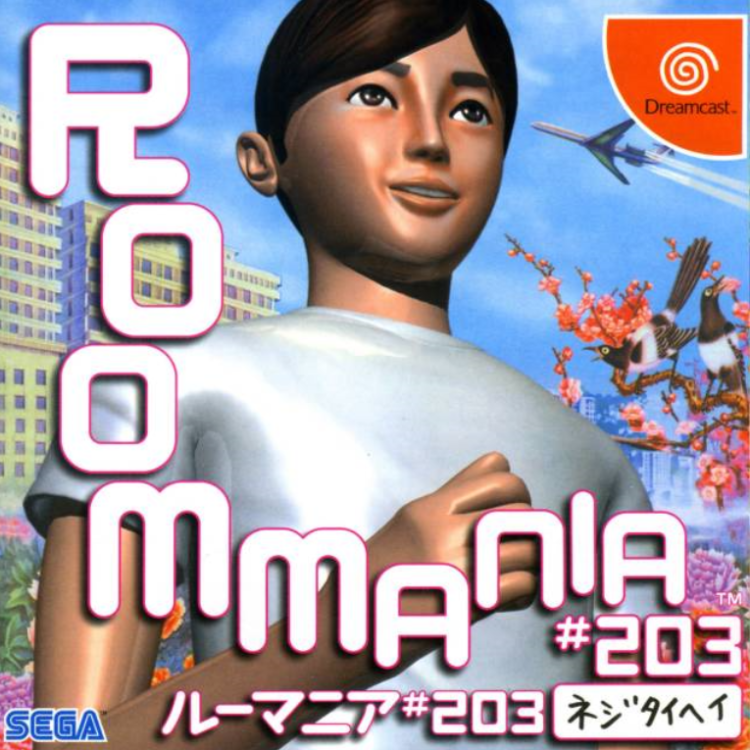
The game, released in 2000 for the Dreamcast and 2002 for the PS2, both Japan-only, can best be described as “tamagotchi with an otaku.” Game Center CX described it as a “life intervention simulator”, in which the goal is to play god over one man’s life to make it as interesting and dramatic as possible, all from the confines of one very small apartment. Being Japan-only and having very little English documentation, it’s hard to discern exactly how the game progresses, but here’s what I could come up with.
You don’t control the man, named Neiji, so much as you influence him. As god of his room, you move the cursor around to objects and fling balls at them until Neiji puts his attention on them. When Neiji isn’t home, you can physically influence objects to move around. Doing so will hopefully grab Neiji’s attention or make it easier for you to call attention to it. From there, he will go on any number of paths to making his life a little less dull. Could be going to the theater, meeting some new friends, whatever to spice his day up just a little bit.
The gameplay is divided into chunks with time limits over them. When the timer hits zero, the scenario ends and you are given some sort of score. There are also multiple endings, the best ending apparently involving Neiji getting engaged. Beyond that, there’s no real telling.
I mentioned earlier that Roommania is surreal, yet it sounds totally average. And that is the exact reason it’s so surreal to me. Life sims typically have some fantastic events or humorous hijinks to go along with it. But Roommania is mundane. It’s the closest I’ve seen a life sim get to emulating real life. And by doing that, it becomes an exceptionally weird game in my mind.
Not only did Sasaki create the scenario and plan to this boringly weird game, she also did most of the music, including one very particular bit: the role of Serani Poji. In the game, Poji is a Japanese pop idol heard on the radio and even seen on a poster in Neiji’s room. In real-life, Serani Poji is the name of a band headed by Sasaki who create music in the Shibuya-kei genre, a mixture of pop, synthpop, and jazz. While Sasaki does not sing the music, she writes and arranges most of it, and her skill allowed the fictional pop idol to become a success, spawning five albums so far, the latest being in 2010.
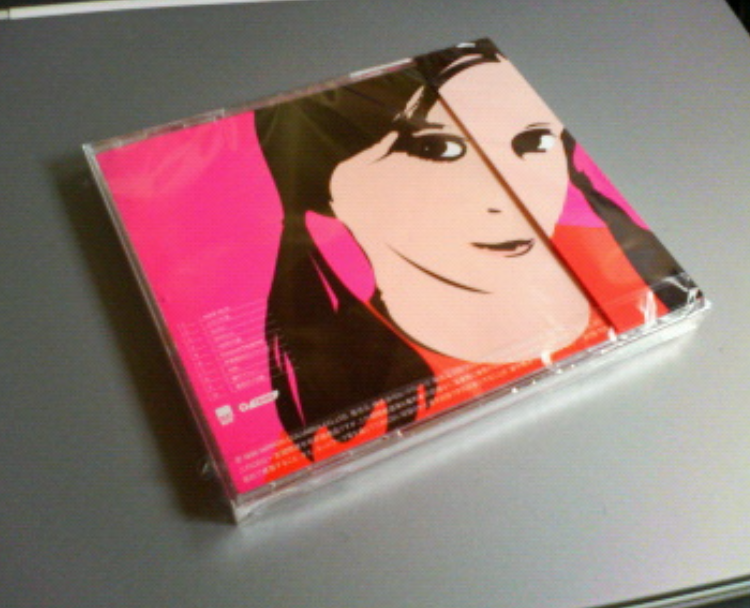
Poji’s music is smooth and peppy, the influences of its genre apparent. “Octopus Daughter” is perhaps one of the calmest, yet most energetic songs I’ve ever heard. The bassline leads the rest of the instrumentation into a cool, collected sound that wouldn’t be out of place in a video game’s shop or main menu, influenced by Sasaki’s work and the song’s origin in Roommania.
Perhaps “influence” is just the right word for a game as odd as Roommania, isn’t it?
Serani Poji is also affiliated with SEGA, thanks to the production of its music being handled by Wave Master, who also developed Roommania #203. Wave Master was once SEGA’s own in-house music studio, creating the soundtracks and the technology behind their game’s audio. Since 2004, they have become a record label, releasing the latest Poji albums.
They also managed Radio DC, an internet radio station headed by miss Sasaki. Radio DC also had its own album, and a compilation of music from various SEGA titles including NiGHTS. It all loops back, doesn’t it?
Following Roommania, Sasaki’s work slowed. She wrote the words to “This Is My Happiness,” from Space Channel 5: Part 2, wrote the lyrics to “Vamos a Carnaval” in Samba de Amigo Ver. 2000, and contributed a couple jingles to Feel the Magic XY/XX, and The Rub Rabbits!. Clearly, all her time and energy was being put into the Radio DC and Serani Poji projects, with two albums releasing from the latter in 2002 and 2004, an EP releasing between them in 2003. It wasn’t until 2007 that Sasaki would return to video games, and for her seemingly final SEGA contribution.
Beyond the Sound of Dreams
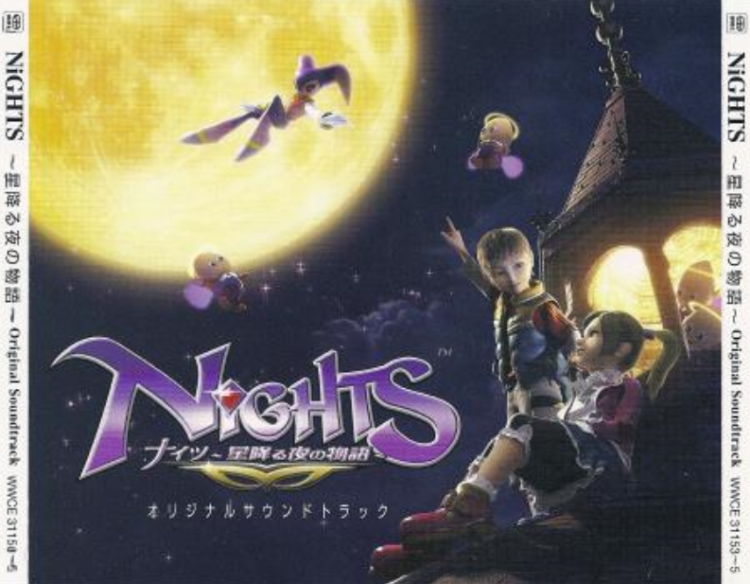
Sasaki returned to head-up the long-awaited sequel to into Dreams…, named NiGHTS: Journey of Dreams. With Naofumi Hataya, Fumie Kumatani, and a large team at her back, it was time for Sasaki and co. to recreate the original magic.
They did something, alright. Journey of Dreams has an oddly underwhelming sound to it. Most notably, it lacks the dreamlike quality the original had, instead going for more concrete, traditional songs. It almost sounds generic. The best songs are the ones remixed from the original, like “Growing Wings,” and “NiGHTS and Reala.” Of course, that’s not to say the score is bad, by any means, it just never quite matches up to the charm and unique execution of the original. But at least It has a song called “EVENT – Win a Goat.”
After Journey of Dreams wrapped up, Sasaki apparently left SEGA to move onto other game projects, as well as focus work on Serani Poji. Following NiGHTS, her first major contribution was to Super Smash Bros. Brawl, for the cover of Ashley’s Theme from the Warioware games, and 2 A.M from Animal Crossing. After that came a new Poji album in 2010, compositions for Deathsmiles IIX: Makai no Merry Christmas the same year, and a score for THE iDOLM@STER 2, though information on what she actually did for these games is scarce. After that, silence.
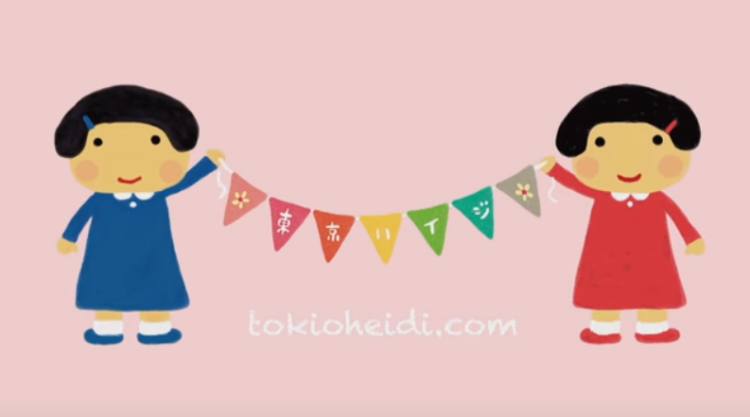
Or at least, that’s how it seems. In reality, Sasaki is apparently quite busy working with a group comprised of much of her family, called Tokio Heidi. Heidi specializes in creating children’s animation, music, and web games. They have been nominated for and received several awards, and are have been quite successful, gaining fame with their animations especially. You can find some of their work via an official YouTube channel, and in a neat twist, some of it’s already got English subtitles!
Tokio Heidi has even gotten enough notability to work with Disney! Yes, once more, it all loops back again; a Disney collaboration was what began Sasaki’s career and now, she’s back working with them all over again. Funny how things work out, eh?
I was expecting this article to end on a down-note, with a final lament on her lack of apparent work during this decade. But it was a very pleasant surprise to find out I didn’t have to. Miss Sasaki turned out to be so much more than I think any of us had really expected. Who I once just knew as the composer of one of my favorite games turned out to have been behind two great game scores, a strange yet ordinary life sim, several smooth albums, fun and creative children’s songs, and a pretty good cover of a Nintendo song.
And for all that, we thank you, Tomoko Sasaki. May you have the greatest of luck and skill in your future endeavors.
Ad:


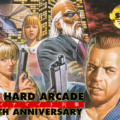


Fascinating. It’s pretty hard to keep track of the many iconic names associated with Sega, who’s still there and who have left. Designers, composers, artists, and whatnot. Had no idea what Sasaki was up to, but glad to see she’s gone onto good things.
Although I loved the soundtrack for both NiGHTS games and can’t deem one superior or inferior to one another. Each good for different reasons.
great read! yup, NiGHTS music and soundtrack was epic, 1996 Sega and it was instant classic for my life! it is ashame NiGHTS2 on the wii was underwhelming, game and music. The final stage did make my heart skip a beat and tears came to my eyes though!
I felt that Journey of Dreams tried to do too much; what makes the original NiGHTS so timeless is the mixture of a “show, don’t tell” philosophy, classic themes, unique dreamscapes and ambiguity.
Is NiGHTS a boy, girl, or genderless? It doesn’t matter; what matters is the message of hope they bring.
How does Claris feel about her upcoming audition, or Elliott about his humiliation? No words are spoken, but the fear of failure and of being “shown-up” is universal; we don’t need to hear how they feel, we already know.
Journey of Dreams tried to tell a defined story, build a world, and expand gameplay into multiple areas, making it feel bloated and unwieldy, whereas Into Dreams let us divine our own story from what was presented, and provided fast, addictive gameplay that allowed us to discover and experience the world through multiple playthroughs. It was elegantly balanced and knew when to stop.
Still, the existence of the sequel doesn’t diminish the power of the first, and I’m still looking forward to introducing my daughter to it in a year or two!
I think the problem with that was trying to expand the audience for a more modern crowd. I think for those of us with Saturns, we kind of just embraced it, immersed ourselves in it and understood what it was trying to achieve as we were playing it.
Looking at the World of Longplay’s playthrough of the game, I was rather surprised at the number of comments from people who didn’t seem to understand anything that was going on, story or gameplay-wise, complained about the short length and didn’t get why it’s hailed as one of the greatest games on the underrated console. The idea that it was a score attack game and was meant to be played over and over again went right past them.
When I was going to a school for game design (note: don’t bother with those kinds of “next door” schools), I was really amazed how many people didn’t like games unless everything about it was explained to them. If they didn’t know what was going on or why, they’d shove it aside. At least that’s my guess why they tried to expand and explain everything in the game. Personally I’m not sure how they’d be able to market a sequel without going in that kind of direction.
That’s a real shame, but understandable. I’ve watched teenagers playing games that are extremely simple to figure out, like Megaman, and still getting confused with the enemy patterns even if they’re telegraphed way in advance.
Though I’m not sure that it’s their fault; teenagers were always the target demographic for games anyway. It’s just modern AAA game development has become such a risk that nobody wants to take a chance on making a game that may turn players off with enigmatic goals, so we have a new generation who’ve only even known games that hold your hand from the off.
But then, I’m sure with a few modifications in presentation a game in the original NiGHTS style could still succeed; it is a remarkably simple game after all.
original NiGHTS is epic, it is a game for the ages! I will play it forever! Yes, today’s game design and today’s game players, they missed alot as we grew up with pre 8bit, 8bit, 16bit, 32bit; for me those eras are so great and wonderful, before commercialism entered into games.
I have to say: When i first put NiGHTS into my sega saturn, it was somewhat challenging to understand how/why i was playing. It was cool, but i didn’t totally get it. That was summer 1996. Then later; as I was waiting for SonicAdventure Dreamcast; the summer/fall of 1998 I got into NiGHTS again and really really fell in love! SonicAdventure was great in Dec. 1998; but NiGHTS was still fantastic!!
I can still remember the day I first played NiGHTS; it must have been around November 3rd 1996, as it was a few days before Guy Fawke’s Night (as you might’ve guessed, I’m a Brit!). I rented it from the local Blockbuster Video for the weekend, and went home and completed it. Then I completed it again because I’d fell in love with “Dreams Dreams”, plus I hadn’t really seen such a heartwarming ending sequence before.
It was another year before I was able to buy the game for myself, and then in November 1997 Sega Saturn Magazine included Christmas NiGHTS on the cover, so I promptly got addicted to that; so much so that I still play it every Christmas! In fact, when I moved to Poland a few years ago only two things from my gaming collection came with me; my Dreamcast, and my Saturn.
Very informative and great first article Moody :p
I actually like Journey of Dreams soundtrack heh, glad to hear her music career is still carrying on!
Room Mania, thanks. I got this game as .GDI file. I will going to play.
I though she was involved in other Sonic Team’s soundtracks like Sonic The Hedgehog 2 (SMS/GG version only), Sonic CD (in fact, there is a remastered single theme from GG Sonic 2 to Sonic CD) and Burning Rangers. I think NiGHTS into Dreams is her best composition, and one of the greatest game soundtracks in history.
You’re close, good eye! She was given special thanks in Sonic CD’s credits, but I chose not to include that because “special thanks” is a very broad term. I looked up Sonic 2 SMS’ credits, and didn’t find any of her known pseudonyms or her actual name in its credits, same for Sonic 2 GG, as they appear to be the same, least as far as composer and sound credits go.
I did mention Burning Rangers in the article, she seemed to sing in one of the songs in the JPN version! “I Just Smile” is credited to her, but of course she was dubbed over in English. She also wrote “Burning Hearts -Burning Angel” with Hataya. Kinda sad I didn’t bring that up further in the article, her voice is pretty nice…
OMG I can’t believe the same composer behind NiGHTS also did World of Illusion… two of my childhood’s most memorable, dream-like games… it.. it makes total sense now O_O